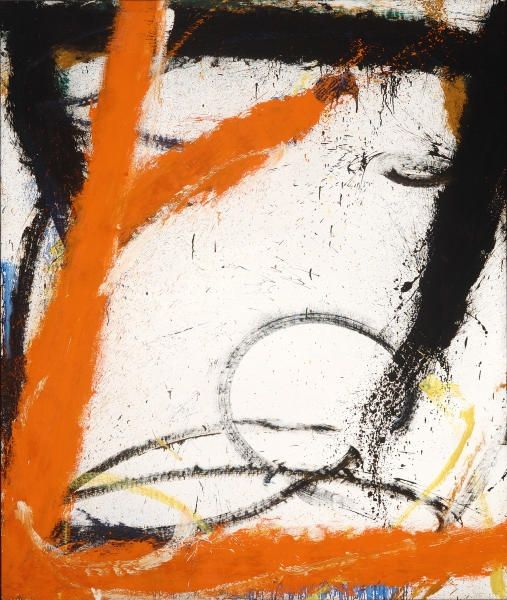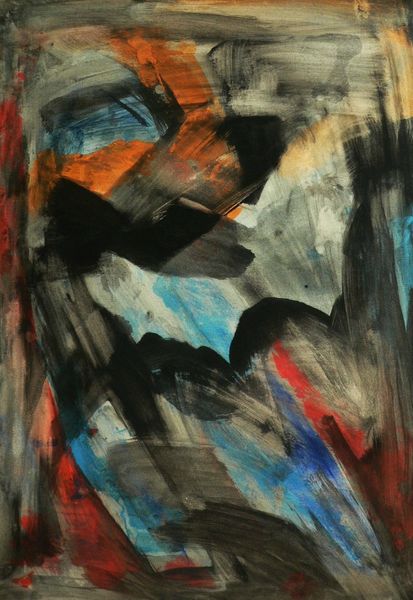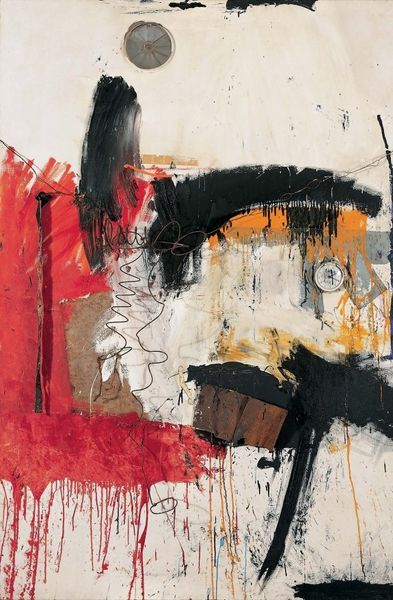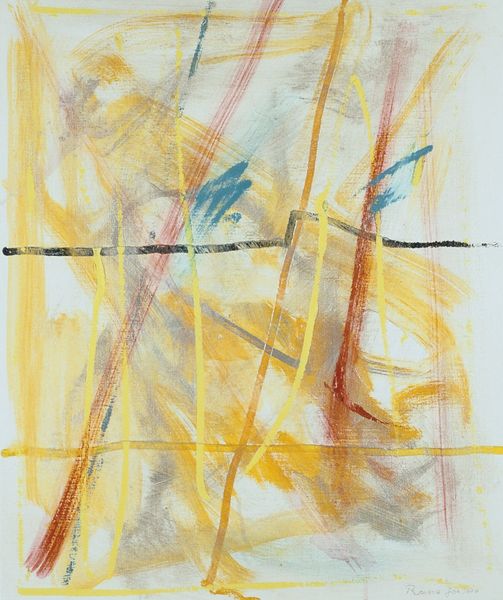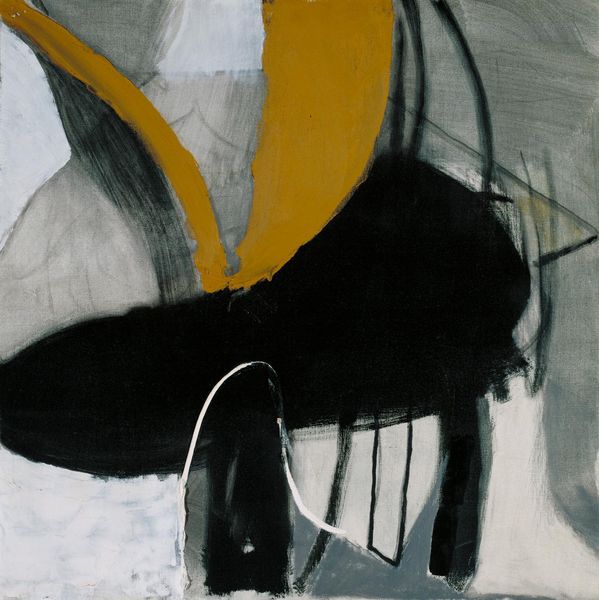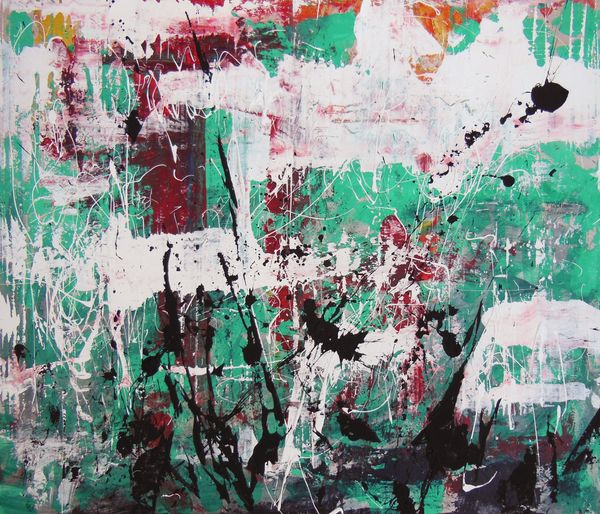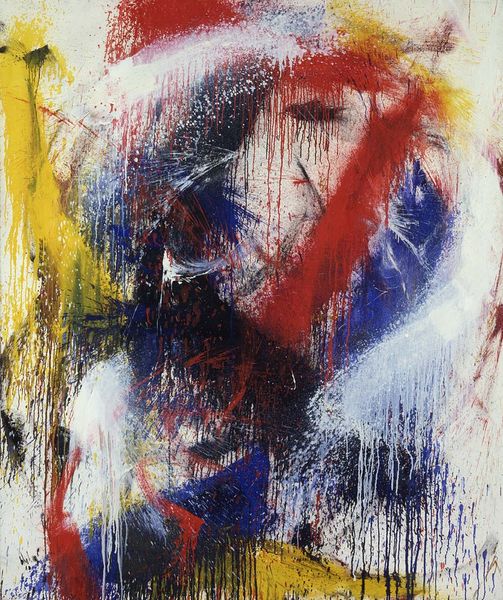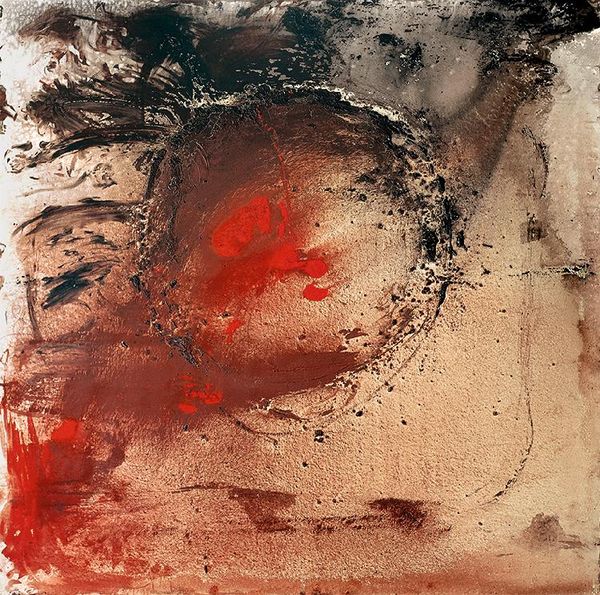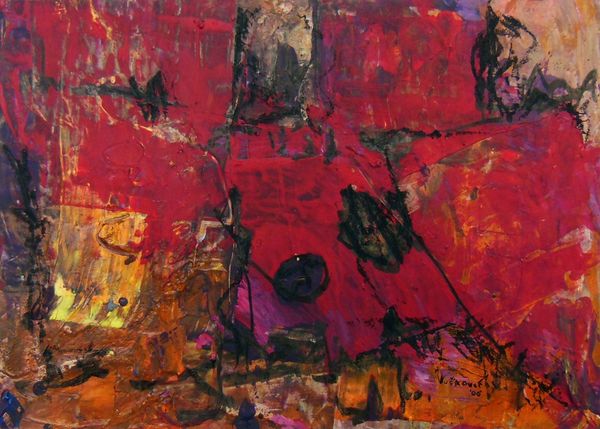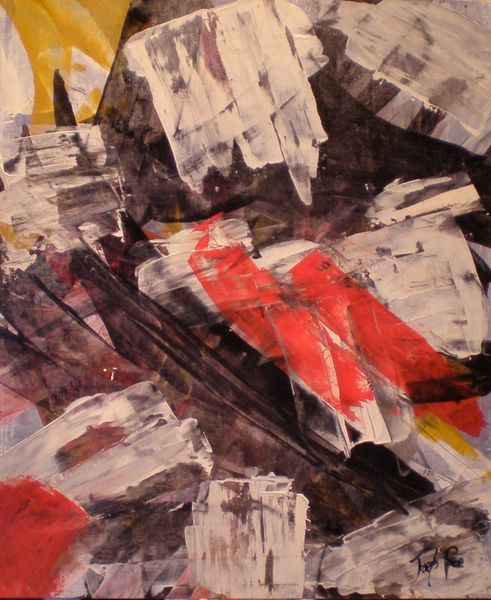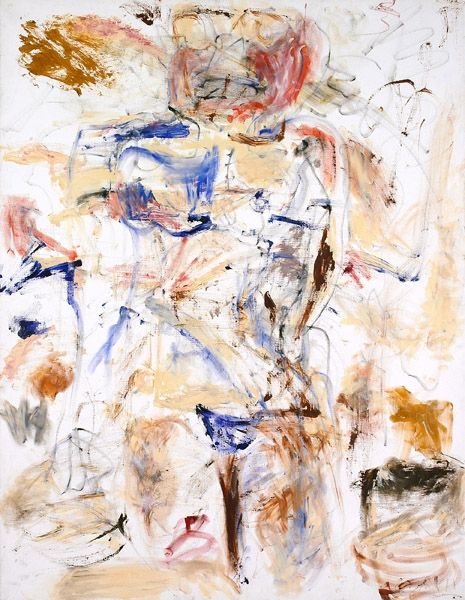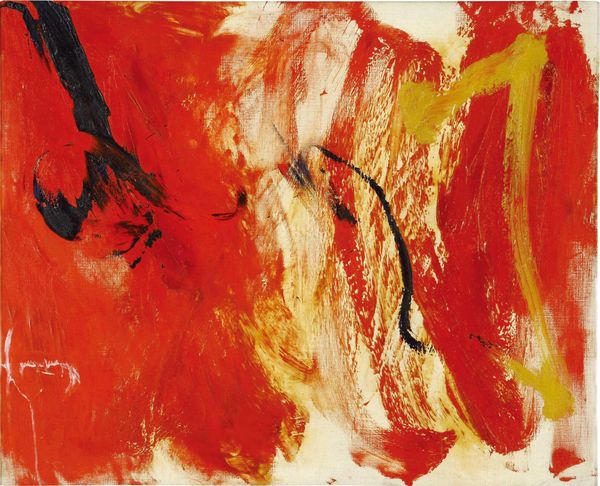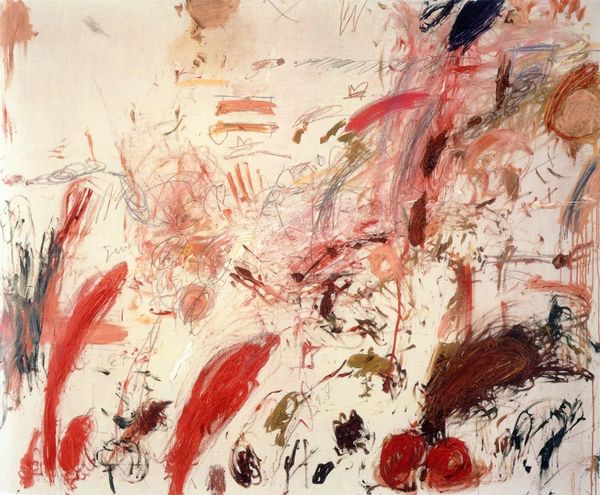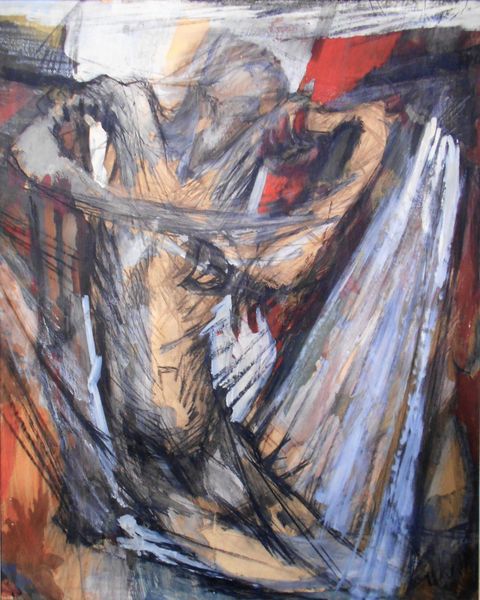
acrylic-paint, impasto
#
abstract-expressionism
#
abstract expressionism
#
acrylic-paint
#
impasto
#
acrylic on canvas
#
abstraction
#
line
Copyright: Norman Bluhm,Fair Use
Curator: Up next we have "Mathematics" by Norman Bluhm, created in 1962. What's your initial impression? Editor: A flurry of motion. I immediately notice the aggressive layering of paint. It seems almost violently applied. What grabs me is the impasto—the thick texture makes you want to reach out and feel it. Curator: It's fascinating how Bluhm navigates the established Abstract Expressionist style. We see so much art from this period emphasizing the heroic individual artist, yet the raw energy speaks to something wider happening in American culture. The role of science perhaps, in that era? Editor: Science, yes, but the physicality of acrylic paint interests me more. There is a tension between its industrial origins and its application to the canvas with gestural sweeps of a brush or palette knife. How does the labor of creation tie in to its overall meaning? Curator: Well, you know that Abstract Expressionism, with its roots in surrealism and existentialism, positioned the act of painting as a profound statement about being and purpose. Editor: Perhaps, but Bluhm doesn’t seem to adhere to those philosophies entirely. His method uses a wide array of tools and strategies. The composition is carefully constructed, hinting at the way a mechanic, for instance, might approach an engine’s layout. There is order to that process. Curator: Still, Bluhm injects an individual impulse into it. The drips and splatters feel so deliberate and not haphazard. It’s his individual expression within certain socio-political circumstances, a cultural production that reflected American anxieties about the Cold War and technological advancement. The cultural climate influenced Bluhm, his education, exhibitions, his critical reception—the narrative is so interconnected! Editor: Maybe, or maybe he was just really enjoying slinging that paint around! It's easy to lose sight of that pleasure. It looks so raw in "Mathematics", a joy for the making above all. I wonder what preparations took place beforehand, the mix of acrylic and possible additives that contributed to this work. Curator: The painting really resonates as both an example of its time, while leaving itself open for reinterpretation in light of all that’s changed in art since 1962. Editor: Absolutely, especially now when discussions on materiality have opened new insights into Abstract Expressionism, making us rethink traditional assumptions.
Comments
No comments
Be the first to comment and join the conversation on the ultimate creative platform.
